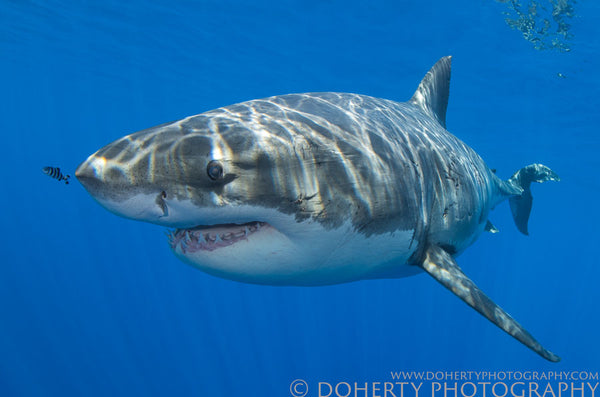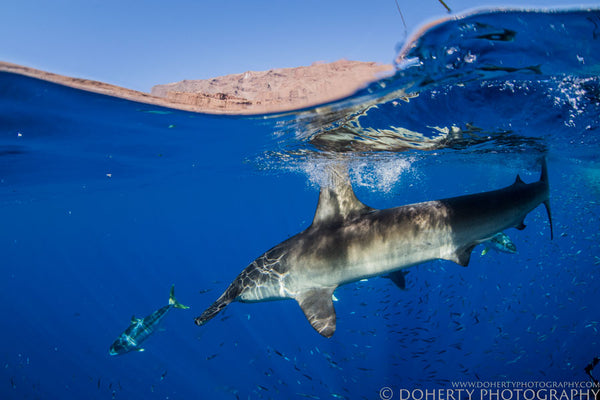Baja of California
October/ November 2016
For my next adventure, I am off to the Baja of California. The Baja is a giant peninsula located south of California and on the west side of Mexico. It is surrounded by the Pacific Ocean on it's west and the the beautiful Sea of Cortez on it's east. My mission is to photograph the california sea lion, swim with migrating whale sharks, chum for makos, and try to photograph the elusive striped and blue marlins. Let's get wet!
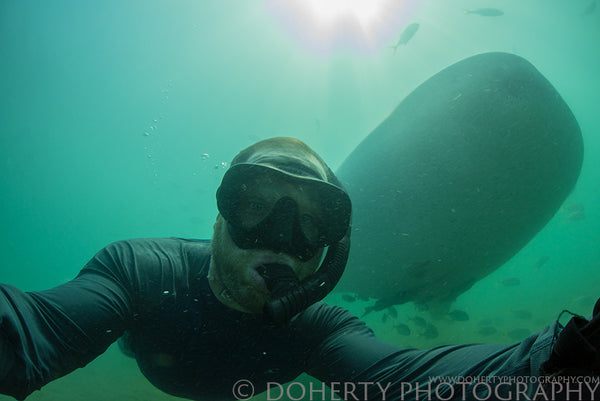
Every winter whale sharks migrate to the shallow waters of La Paz to feed on the plankton rich waters. I left by boat around seven AM just as the sun crept over the horizon. It only took forty-five minutes motoring around the coast to find our first whale shark. The water was extremely calm and there was no mistaking the gentle giant's dorsal fin and tail fluke breaking the surface. It was a small fifteen foot juvenile swimming near the surface trying to gulp up as much plankton as he could.
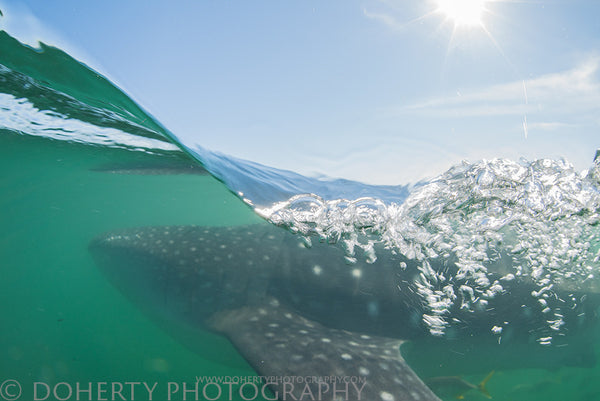
I quietly slipped into the water so I didn't disturb this friendly giant. The water was murky and green, not great for photographs. But nevertheless, I held my breath and dove down to the bottom in front of the shark. With the low visibility, I couldn't see where the whale shark had gone. All of a sudden, he appeared out of the murky water right in front of my face. I tried to get out of his way but was too late. I had to lay down with my back on the sand as he passed just inches over my chest.
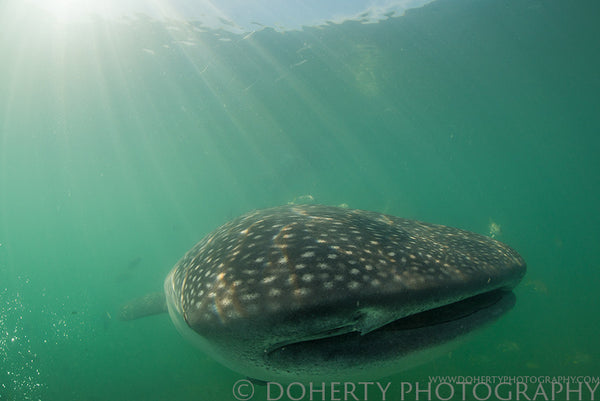
It's such a surreal experience swimming next to these massive creatures, and I spent four hours swimming alongside and diving with the biggest fish in the ocean. Keeping up with this guy was no small feat and having to hold my breath constantly made it even harder. It was definitely not an easy photo shoot, but I am extremely pleased with the images I obtained.
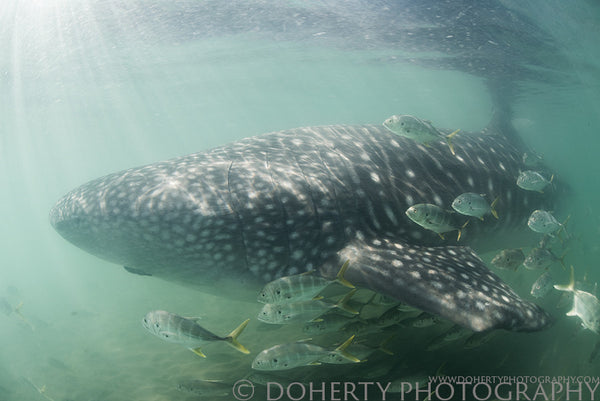

Next, I'm going to take you to a sea lion colony, located north of the isolated Isla Espíritu Santo, to photograph the lobos del mar (Sea Wolves). The sea lion colony is located at a cave with a collapsed roof forming a crater and hidden sanctuary for the pups. It takes a two hour boat ride from La Paz to reach the colony, so I jumped in, strapped down, and enjoyed the ride.
We pulled up to the small island and dropped anchor. I immediately heard the bark of the sea lions playing in the distance, and could tell I was going to have a great day. After I suited up, I slid into the water and began a one-hundred yard swim over to what looked like a giant rock sticking out of the water.
My first encounter was with a full grown female who seemed not have a care in the world. As she lazily swam around the reef, she would slowly make passes at me and acted very interested in my camera. At one point she swam up to me, looked in my lens, then scratched her head as if to wonder "what in the world do you have in your hands?" As I swam further in, I started to see a few more adults lazily swimming around. I even snuck up on a sleeping male for a quick shot.
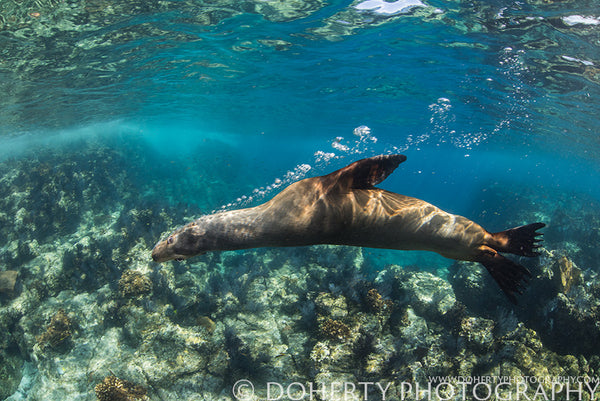
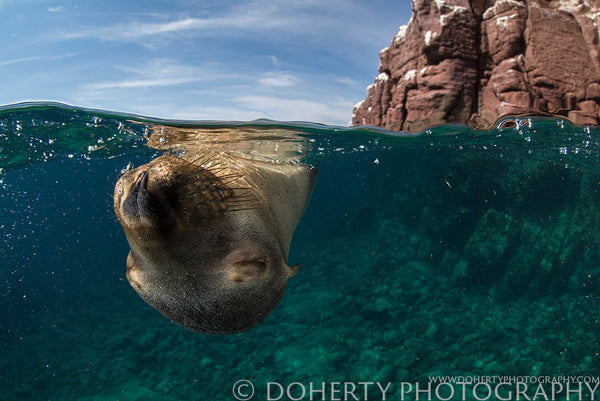
After spending some time with the grown ups, I swam over to the rookery where there were dozens of pups playing. These curious pups swam right up to me and started biting anything that looked like it was fun to play with. At one point I had three pups biting my fins, two on my strobe lights, one on each arm, and one trying to pull the snorkel out of my mouth. Their playful bites didn't hurt. It was exactly like playing with a puppy, but It made it very difficult to maneuver my camera.
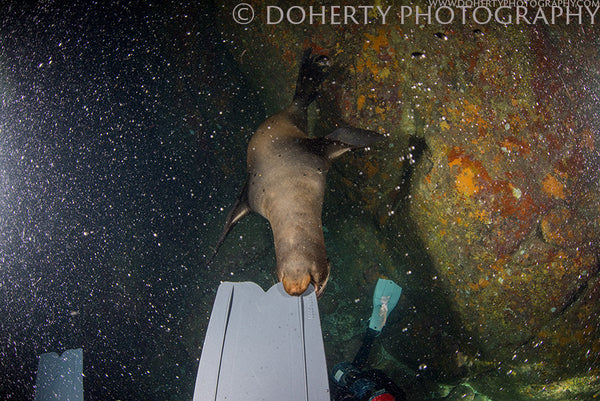
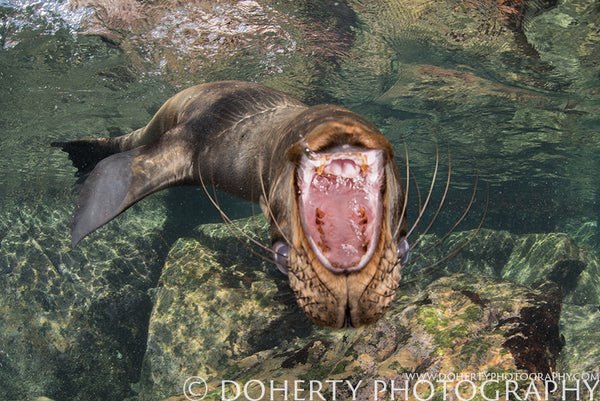
As I was swimming along the Island, I noticed a cave and decided to go in and check it out. To my surprise there were at least 30 pups swimming around playing together. They all looked at me when I swam in as if I were a giant chew toy. I was instantly swarmed. It was very difficult to get any photographs with all of the closeup action, but it was an amazing experience to interact with all of the pups. My favorite image of the trip was one of the younger pups who swam right up to the front of my lens and gave me the cutest look I have ever seen. There was always at least one adult female watching the other pups as the other adults went outside of the cave to forage for food and get some alone time.

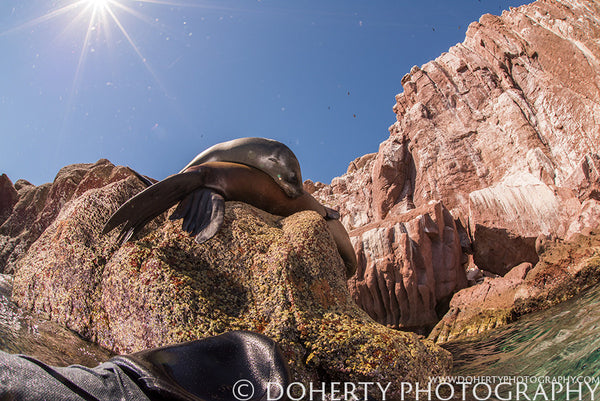
After I left the cave, I wiggled my way through a small opening in the rocks and found a hidden portion of the island. As I swam in, I was immediately greeted by the large alpha male of the colony. He looked over at me and charged. As he made a pass at me, he began to threateningly blow bubbles; warning me to get out. I decided to take one quick picture and get out of his space. I was in no mood to get attacked by this very large and intimidating male.
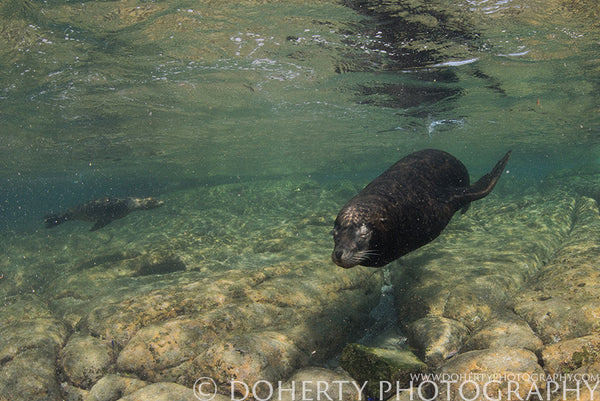
I spent about six hours a day for the next few days out with the sea lions. There was lot of swimming, playing, and laughing with the pups. It is such a rush to immerse yourself in the ocean and experience the world of the sea lion.
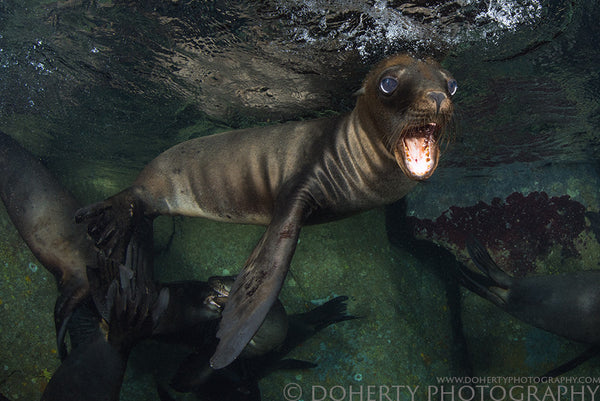
After I finished up with the whale sharks and sea lions, I made my way over to Cabo San Lucas with hopes of finding Marlins and Mako sharks with Cabo Shark Dives. As I walked up to the marina in Cabo, I was greeted by my captain and we loaded the boat with my gear and lots of bloody chum for attracting the sharks. We had a twenty minute boat ride out to the spot where we were going to chum for the makos. Once we arrived, we shut off the engines and started chumming as we slowly drifted with the current. It only took around twenty minutes for our first sharks to show up.
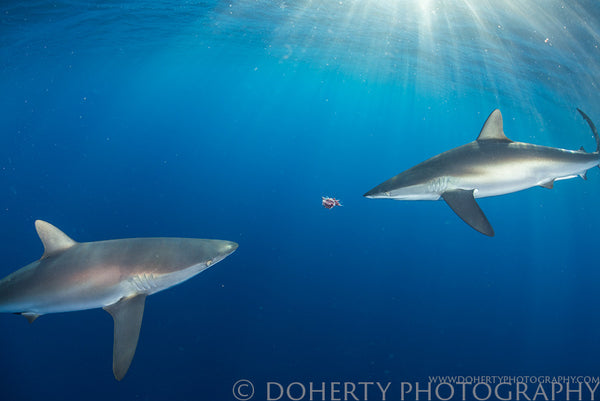
The first shark was a six foot silky. I grabbed my camera with excitement and rolled into the water. I positioned myself right next to the chum box, as that is usually the best place to be for very close interactions with the sharks. Right away he swam right up to me for this awesome close of up him. I was using a fifteen millimeter fisheye lens, so it was very important that I get as close to the sharks as possible. In this shot, he is actually bumping my camera dome. The lighting and water clarity were ideal for these shots and I was extremely pleased with the detail I picked up in his face. After fifteen minutes or so with this shark, I turned around and there was another silky coming in behind me. Then another. And another! Soon I had five silkys circling around me. I had some great action that day and was very pleased even though no makos showed up. Maybe next time.
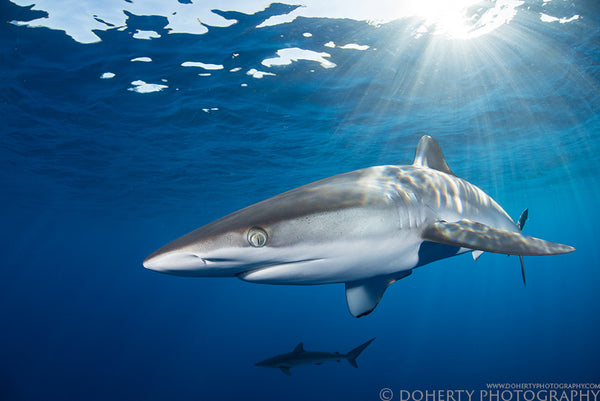
The next few days were going to be very long. Marlins are one of the most difficult fish in the ocean to get close to as they tend to be very shy. I got on the boat in the early morning and we took off.
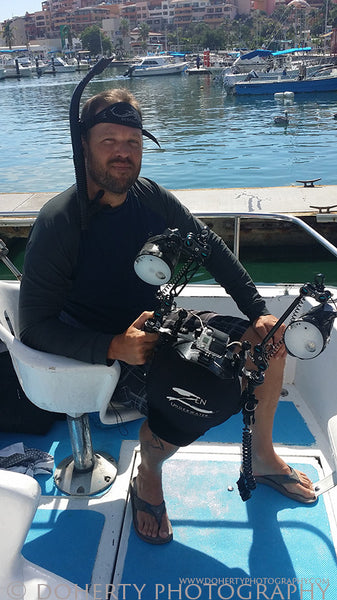
As we motor boated along, we looked for frigate birds flying in the sky. That is a good sign that a baitball is below. A baitball is a school of fish that swarm together in a spherical formation as a last ditch defensive measure against predators. These large schools of fish swimming in unison makes it very difficult for predators to pick out single fish. However, these baitballs look like an all you can eat buffet, and can be very easy to spot for all kinds of predators. Hence, the frigate birds flocking above them.
But just as the mackerel and sardines have developed this incredible defensive strategy, the marlins have developed quite the offensive strategy. The marlin will work together to swarm the fish and force them to form the baitball. They will herd the fish off the bottom and push them up to the surface. Once the baitball is formed at the surface, the marlins will charge one at a time into the ball slashing with their spear like bills killing, injuring, or stunning the fish. After they charge through they will turn around and collect their prize.
As we continued looking for baitballs with no luck, we tried another tactic by fishing for them without hooks. We put our lures in the water, and using the boat's outriggers, we began to trawl for the marlin. We spent hours each day boating around and listening for the marlin to hit the bait. My plan was to jump in as soon as the bait was hit and hope the marlin would still be around chasing our bait.
On our third day looking for marlins, I heard the engines suddenly shoot off. I ran up to the bridge to see what was happening when I heard the captain yell, "Marlins!" It was a large striped marlin sleeping at the surface. All you could see was his dorsal and tail fin breaking the surface. He was just rolling with waves taking an afternoon nap. I quietly rolled into the water and swam up towards him. It took me about five minutes to get to him. I slowly edged closer and tried to be quiet, but I woke him up and he promptly swam off. I took one photo from far away just to prove my story but nothing I was happy with. They are such a beautiful animal with all of the electric colors they display.
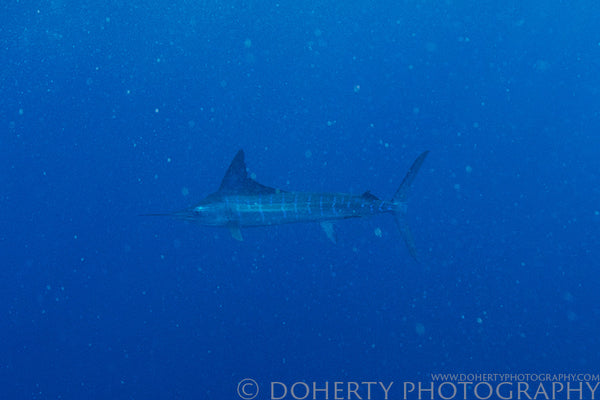 I spent ten hours a day for three days straight riding in the back of the boat without ever finding a baitball. I hurt my back from the rough waves and didn't get the shots I wanted but it was still an amazing experience. We saw some amazing animals on the surface including a thresher shark, humpback whale, common dolphins, and the critically endangered vaquita.
I spent ten hours a day for three days straight riding in the back of the boat without ever finding a baitball. I hurt my back from the rough waves and didn't get the shots I wanted but it was still an amazing experience. We saw some amazing animals on the surface including a thresher shark, humpback whale, common dolphins, and the critically endangered vaquita.
The vaquita, spanish for little cow, is a porpoise endemic to the Gulf of California. It is the most endangered cetacean in the world and has been critically endangered since 1996. The most recent survey in November 2016, estimated there to be only around thirty left living in the wild. Many are worried the species will soon be extinct. A protective housing/captive breeding program, unprecedented for a marine mammal, has been developed and is undergoing feasibility testing, being now viewed as necessary to rescue the species. However, the sea pen housing needed will not be implemented until October 2017, which many fear will be too late for the vaquita.
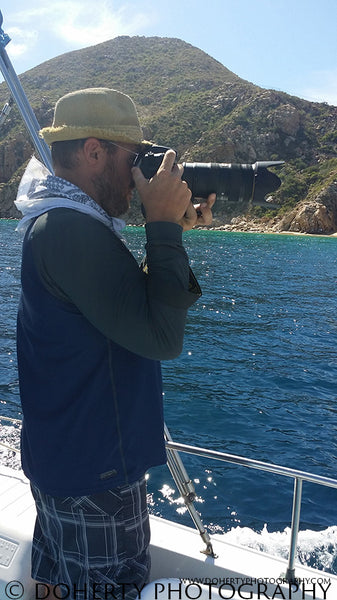
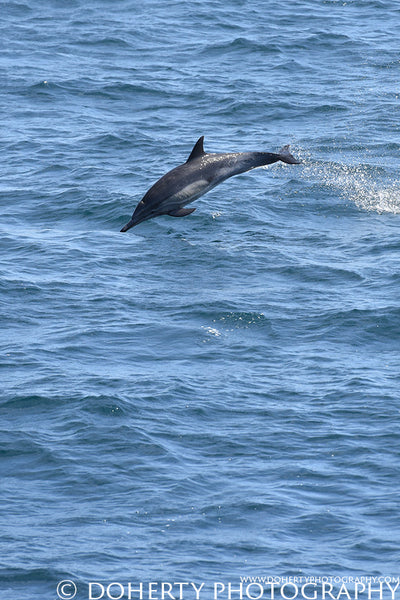
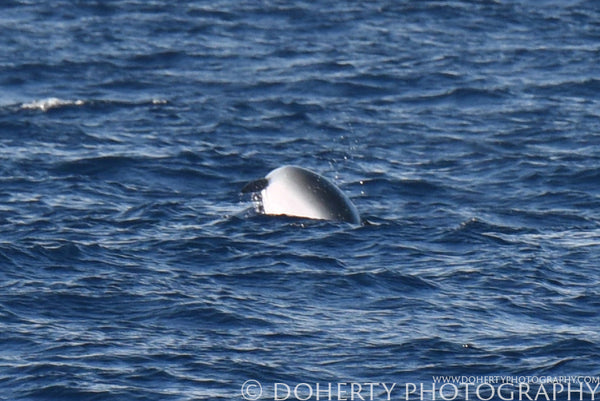
Even though I didn't have much luck with the marlins and makos I did get some amazing shots this trip. The Baja of California is such a unique place with so many species of amazing animals living in the oceans. I want to extend a big thank you to Jacob from Cabo Shark Dives for taking me out, and plan to be back very soon. I'll see all of you again next time.
Adios
Guadalupe Island - Great White Cage Diving
This adventure I am headed to Guadalupe Island in search of the world's largest predatory fish, the Great White Shark. Guadalupe is a volcanic island located about 150 miles off the west coast of Mexico's Baja Peninsula. Due to it's large seal population, it is one of the premiere locations for observing the Great White Shark in it's natural habitat.
I started my journey flying to San Diego, California from my home in Jupiter, Florida. From there I drove down to Ensenada, Mexico where the boat was waiting in port for my arrival. I finally arrived at 9 pm that evening, met the crew and captain for our safety briefing, and set sail on the 24 hour crossing to Guadalupe Island. My first night left much to be desired. The waves averaged 12-14 ft and the rocking boat flung me out of my bunk over and over. The next day was full of dive briefings, shark identification classes, and preparing my gear for the next morning's dives. As we approached the island that evening I felt like I was in a scene from King Kong. With only the moonlight to illuminate the island. I watched silently as the ominous silhouette slowly grew bigger. We arrived around 9 pm and dropped anchor 100 yards offshore. After a few beers and some dinner we all retired to our bunks so we could be up as the sun rose to jump into the water.
My first night left much to be desired. The waves averaged 12-14 ft and the rocking boat flung me out of my bunk over and over. The next day was full of dive briefings, shark identification classes, and preparing my gear for the next morning's dives. As we approached the island that evening I felt like I was in a scene from King Kong. With only the moonlight to illuminate the island. I watched silently as the ominous silhouette slowly grew bigger. We arrived around 9 pm and dropped anchor 100 yards offshore. After a few beers and some dinner we all retired to our bunks so we could be up as the sun rose to jump into the water.

Guadalupe Island Day 1
It was 5 am when I poured a cup of coffee and watched the crew begin chumming the water as the sun rose. The boat was equipped with two surface cages and 3 larger submersible cages lowered down on a winch. By law, it is required that divers must be inside of a cage when diving with Great Whites. For my first dive I chose one of the surface cages.

The surface cages provide a lot more action as Great Whites hunt near the surface. Right off of the bat I had a 12 ft male charge the tuna heads floating by the surface cage. His momentum carried him right into my cage. I had to put my hand on his nose and direct him away. It turned out to be one of my favorite images from the trip.
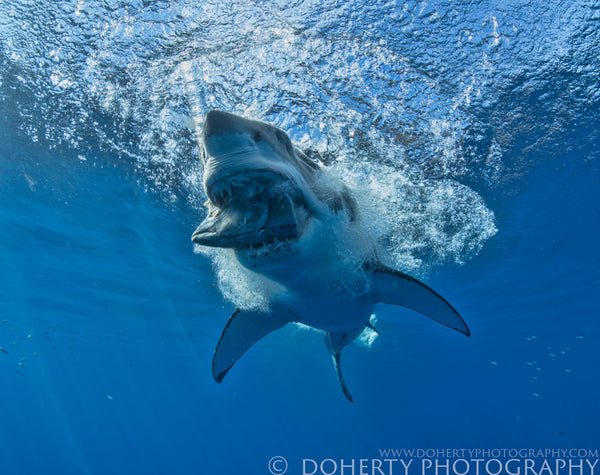
Throughout the day, we had a total of 5 sharks show up. This was the first time I encountered Lucy, an 18 ft pregnant female white shark. October through November are the only times of the year that these massive pregnant whites come to Guadalupe, which was my reason for coming this time of year. Lucy made multiple close passes by the cage and even came within 3 inches of my camera for an extreme closeup. Seeing these colossal mamas up close is an experience of a life time and made my whole trip for me.
Guadalupe Island Day 2
On the second day out I wanted to try a few different shots. I built a 7 foot pole cam for my camera which I could control with a remote shutter. This would allow me to get up close and personal with the whites. I was hoping my camera might spark their curiosity and lure them in. I began my day in the surface cage and everything was going along great until a 13 ft male rammed right into my camera and hand. I thought at least one would be broken due to the sheer power of these animals, but both turned out alright.
Next I decided to try some over/under shots to get the island in the back ground of the shot and the sharks in the foreground. This meant me lying on top of the cage with my pole in the water. It was a very difficult shot to capture as there are many factors that come into play. First I had to make sure there were no beads of water on my dome port that could ruin a shot. And with constantly moving ocean splashing it is easier said than done. Focus was my second biggest challenge. Trying to keep the sharks and the island in focus while my camera is 7 ft away proved very challenging. A small aperture helped tremendously with this.
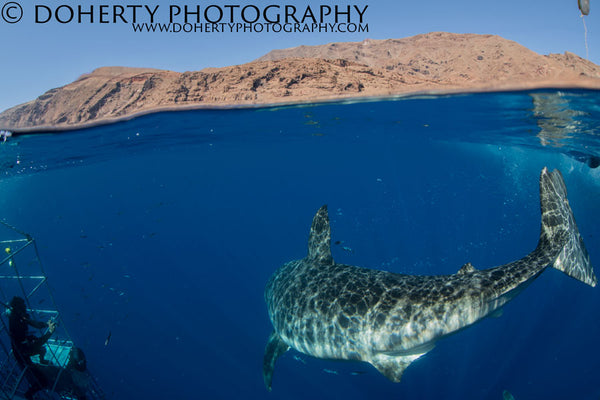
As I lay in wait for a shark to move into the right position I heard the Captain yell, "Hammerhead!" And to my surprise a Smooth Hammerhead zoomed in to eat the bait. He got just a few bites in before a giant 18 ft female crashed in to chase him off. This happened several more times before the Hammerhead got the message and moved on.
Guadalupe Island Day 3
The final day I went down into the submersible cages. Down 40 ft below the surface, I could observe more natural behavior of the whites. All day I had two giant 18 ft females calmly circle the cages. They seemed to have a very similar swim pattern as they swam straight up to the cages coming inches from my lens, and then would swim out of sight. After a few minutes passed they would repeat the same pattern. I really enjoyed watching the pilot fish that would swim right in front of the white sharks mouth as it added perspective to some of my photos.
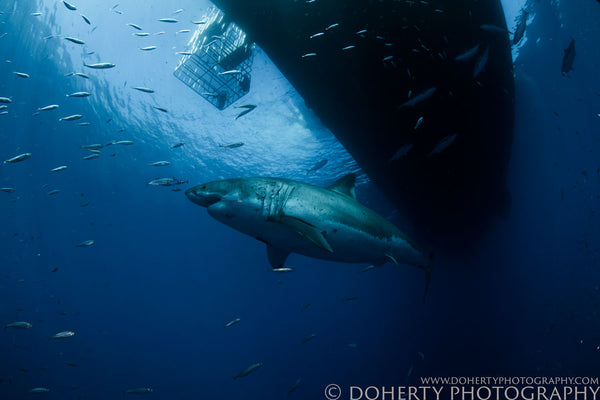
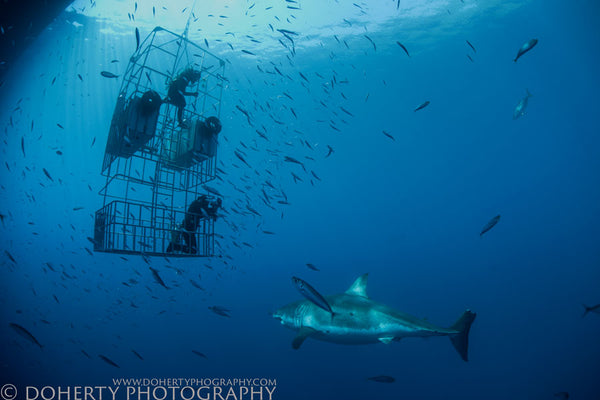
The ocean is always unpredictable which makes many of my trips have varied success, but aside from the rough crossing there and back it was an amazing trip. We encountered Great Whites each of our days at Guadalupe, and I achieved most of the photographic goals I set out for. Getting to be in the water and photograph these gargantuan apex predators of the ocean truly is a humbling experience and one I will not be soon to forget.
A Year Under the Water
I have been diving for over 14 years now and have logged over 8,800 dives. With each lasting an average of 1 hour, I have spent over 1 year of my life under the ocean. Which is where the title of this blog comes from.
I started doing underwater photography as a way to document and share all of my underwater experiences. It was hard explaining to people the amazing encounters and underwater joys that I had been witnessing. Jacques Cousteau once said, "People don't want to protect what they can't see." And it is my hope that bringing awareness to this great dying ecosystem can help preserve the numerous species that live among it.
Over the years, I have grown considerably as a photographer and a diver, and am still learning new things every day. I have had great days and bad days out on the ocean. Scary and exciting days. I've had stormy days and sunny days. And hopefully I have many more of each to come.
So far I've written all of these "blogs" down in my journal. Over the next few months, I will be digitizing them to this blog. I will start with some of my newer adventures then slowly go back a few years.
I'll leave you today with a picture of myself looking into the eyes of a 35 foot whale shark. This picture always reminds of me of how small we are in this great big world we share.
-Chris


